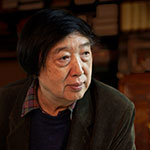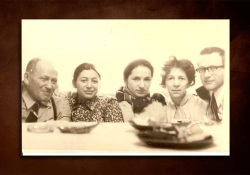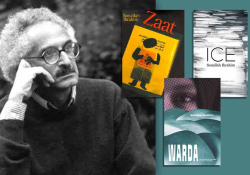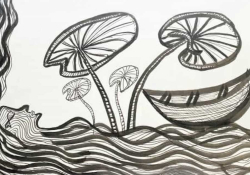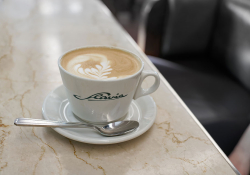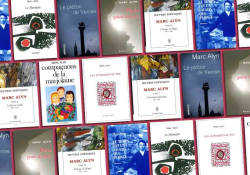The Street Kiss
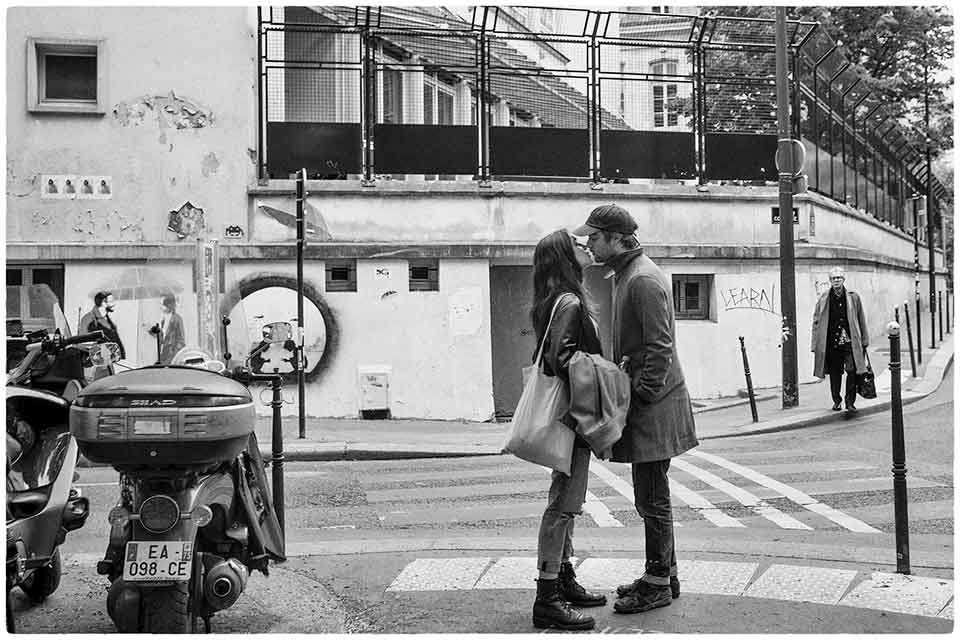
Feng Jicai looks into the life of Parisians and their unique “street kiss” culture. He is mesmerized by the affection that they share unapologetically, in a world where Hollywood has equated love with insatiable sex.
The day before leaving Paris, I went to a tourist souvenir shop, wishing to get a few postcards as keepsakes of my trip. The Paris postcards, which were multicolored, were beautiful and enticing. Yet, unlike tourists, who pick those of the usual scenes like the Eiffel Tower, Notre-Dame Cathedral, or I. M. Pei’s glass pyramid in the Louvre, I took one from the shelf that featured a young couple kissing each other in the street with gay abandon. At that moment, a French man smilingly nodded his approval of my choice as a foreigner. In return, I triumphantly lifted my brows, as if to say, “Of course, I understand. This is Paris, true to its name.”
More than two months ago, when I arrived in Paris, my host arranged for me to stay on a winding, narrow street in the Latin Quarter of the Sixth Arrondissement. At the end of this street lies Place Saint-Michel square, which is known to all in Paris. In front of the square stands a monumental structure featuring bronze sculptures and a fountain. This square, situated at a crossroads, is not huge, yet it directly faces the entrance to Pont Saint-Michel, a bridge over the Seine, and is a junction for several nearby streets. Naturally, it has a broad view and is accessible from all directions. Whether above or under the ground, it is a hub of communications. As a result, the square has long been a place for lovers to meet in Paris.
I passed by here at least twice a day. The square always teemed with people expecting their lovers, men and women, boys and girls. Whenever it rained, they'd be holding umbrellas, standing there infatuated with their figures quietly reflected in the puddles on the ground, which touched me to the heart’s core. Those who had not yet seen their lovers would feel profound loneliness, while those whose wishes had been met would find themselves intoxicated with the ecstasy of love.
Sometimes a huge crowd would mill around, though they were by no means related to each other. Yet their fever of anticipation for love silently struck awe in my heart. Taking a closer look, you would see that some waited with patience, others looked around restlessly, while still others anxiously appealed to their cell phones for information. Still, the most common occurrence was of young couples who, having consummated their heart’s desire, now passionately hugged and kissed each other, totally disregarding the comings and goings of other people and vehicles.
Kissing is, so to speak, an open language of love among Parisians.
The street kiss has long been the most charming landscape painting of Paris. Since the camera first became available in 1848, the street kiss in Paris has frequently been captured by photographers. These pictures, which more often than not became masterpieces, made their photographers world-famous. I once joked with a fellow traveler, “You lift a camera and randomly press the shutter button on the streets of Paris. Go back home to develop and print your film. Without fail, every roll will have a kissing photo.” Whether you loiter on a street corner, by the river, on a bridge, at a subway station, or in a sidewalk café, you can always see young couples caressing and kissing.
Kissing is, so to speak, an open language of love among Parisians. Overflowing with emotions, they often cannot contain the affection that inundates their hearts. When they come across a red light in their walk and wait for it to turn green, they will snatch that moment to have a kiss or two. When they drive up to a red light, they will seize that golden chance to enjoy a good, fat kiss. I once saw a young couple walk into the middle of the road and abruptly hug and kiss each other with passion; the vehicles coming and going did not honk but made a detour to file past them instead. The earth beneath the feet of lovers kissing passionately has always been an island of safety in the heart of Paris. Such a scene, except for in Paris, can only appear in movies. If you take a closer look, you will see their kissing language is by no means uniform but rich and varied. Some are making love bright and pure, some expressing affection abiding in their hearts, and some making pledges blanketing the earth and eclipsing the sky.
The earth beneath the feet of lovers kissing passionately has always been an island of safety in the heart of Paris.
Paris is simply a holy land for kissing. Of course, I’ve seen such street scenes in many other cities, such as Berlin, New York, Luxembourg, Oslo, Kobe, and Singapore. Yet those street kisses are simply replicas to me, far from being so pure and natural like those in Paris. Today, on the streets of China, you can see such spectacles from time to time. But while the street kiss by Chinese people is more like a public display of courage or an outcry against tradition, the street kiss in Paris is in the kiss itself. They abandon themselves to emotions, follow their hearts, and kiss as they please. This is probably why people say the French are romantic.
Of course, some may say that Americans are more romantic, yet their romance is different in nature. French romance is tinted with spiritual flavor, while American romance is directly linked to sex. French people fancy that a long kiss can extend into eternity, while Americans’ kisses won’t exceed more than a minute before they take off their clothes. Hollywood depicts the highest realm of love as voracious sex, while the French say that sex “is not selfish erotic desire but lofty friendship that the body also takes part in,” a thesis described in the novel Jean-Christophe, by Romain Rolland. So the symbol of American romance is the naked woman wearing nothing but high heels in the red-light district of 42nd Street in New York, while that of French romance is this street kiss.
The French are proud of their street kissing. To me, the most profound meaning is that they enjoy the ubiquitous expression of love, the beautiful picture of life, the unrestrained and free human environment. The street kiss has become both a most charming scene and a staple of Parisian lifestyle.
One day, I descended from the ninth floor of a high-rise building in an elevator when a couple abruptly began to kiss each other. In an instant, they flamed with longing for affection like a ball of fire. After the elevator reached the first floor and the door opened, they were still involved in this burning kiss. Other people in the elevator walked out as if nothing had happened, and no one told them to get off. I had been in Paris for more than a month, so I knew better than to disturb them. For them, love was a hundred times more important than getting off the elevator. So, I walked out, and when I looked back, the couple was still kissing while the door was slowly closing. After the door closed, the elevator ascended. I thought the young couple inside, now rising up in a passionate kiss, must be in the seventh heaven of delight, like celestial beings.
I related the incident to a French friend of mine. He said, “If they kiss on a plane and do not get off at their destination, they will probably fly right back.”
I continued, “And if they are still kissing each other when they land again, won’t they fly back again?”
We both laughed at that image for the rest of the day.
Translation from the Chinese
